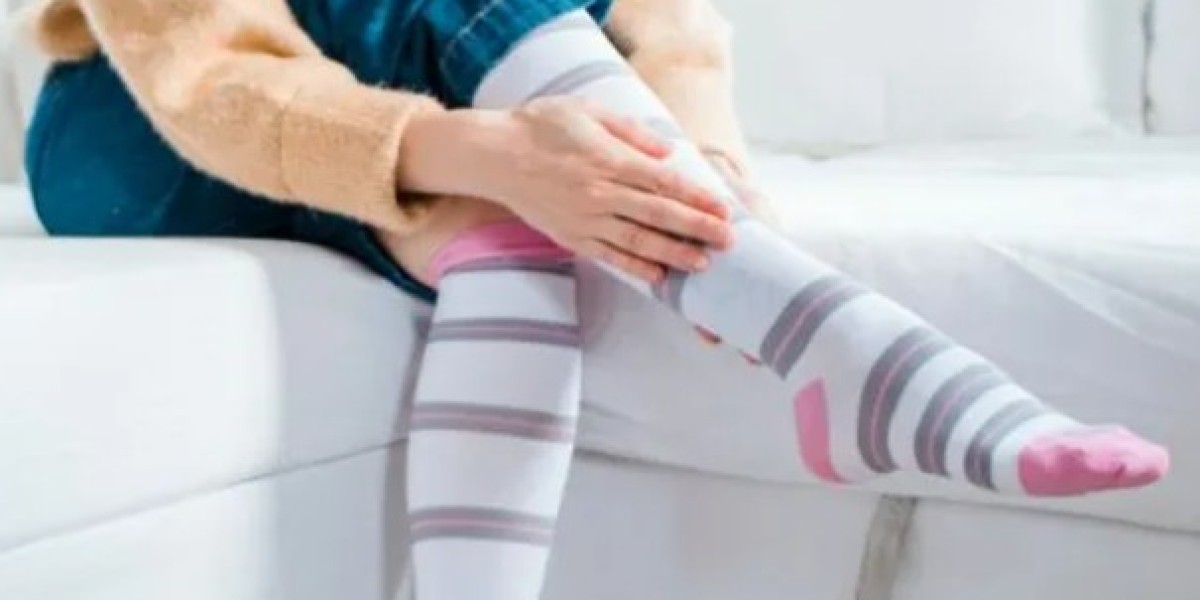Compression socks work by applying graduated pressure to the legs, which helps improve blood flow and reduce swelling. Here’s a breakdown of how they function and their benefits:
How Compression Socks Work
Graduated Compression:
- Graduated Compression: Compression socks are designed with varying levels of pressure. The compression is highest at the ankle and gradually decreases as it goes up the leg. This gradient helps push blood from the lower extremities toward the heart.
- Pressure Levels: The socks apply pressure in millimeters of mercury (mmHg). Typical compression levels range from 8-15 mmHg for light compression to 30-40 mmHg for firm compression, depending on the need.
Enhances Blood Flow:
- Improved Circulation: By applying pressure, compression socks help veins and muscles work more efficiently. This improved circulation helps prevent blood from pooling in the veins and reduces the risk of conditions like deep vein thrombosis (DVT).
- Oxygen Delivery: Enhanced blood flow also ensures better delivery of oxygen and nutrients to the muscles and tissues, which can reduce fatigue and support quicker recovery.
Reduces Swelling:
- Fluid Control: Compression socks help manage and reduce fluid buildup in the lower legs, which is common during prolonged periods of sitting or standing. By promoting better fluid drainage, they reduce swelling and discomfort.
Prevents and Treats Varicose Veins:
- Vein Support: They support the walls of veins and help prevent or alleviate symptoms associated with varicose veins, such as pain, heaviness, and visible veins. The compression helps to keep veins in a more regular shape, improving overall vein function.
Alleviates Symptoms:
- Leg Fatigue: Compression socks can help alleviate leg fatigue and discomfort by providing extra support to the muscles and reducing the strain on the veins.
- Recovery: They are commonly used by athletes and individuals who engage in intense physical activities to help reduce muscle soreness and speed up recovery.
When to Use Compression Socks
- During Travel: To prevent swelling and improve circulation on long flights or road trips.
- For Medical Conditions: If you have conditions like varicose veins, chronic venous insufficiency, or lymphedema, as advised by a healthcare provider.
- For Athletes: To reduce muscle soreness and enhance recovery after intense exercise or competition.
- Daily Use: For individuals who spend long periods on their feet or sit for extended periods, such as during work or while traveling.
Compression socks should fit snugly but not be painfully tight. If you experience any discomfort or have specific health concerns, it’s a good idea to consult with a healthcare provider to determine the right compression level and usage for your needs.



